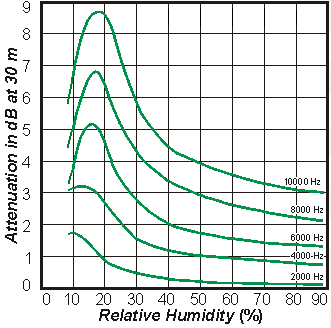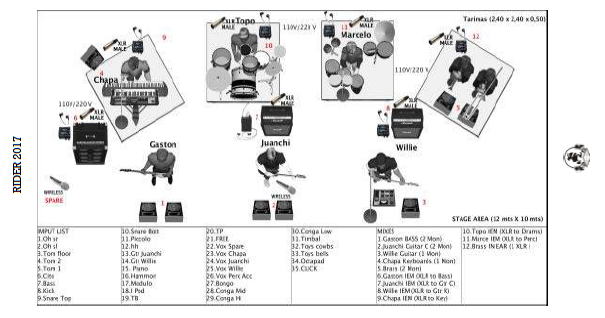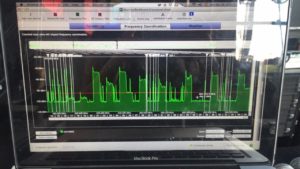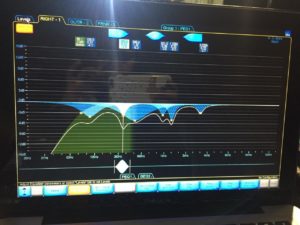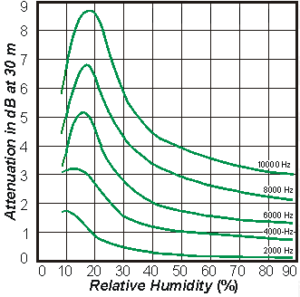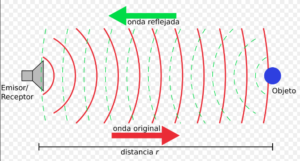By: Nizarindani Sopeña and Andrea Arenas
As audio engineers, we have to take into account different factors that make our work more efficient, allowing us to focus on the art behind mixing sound. If take this principle into account, before a show we must take into account a number of extremely important factors so that we reach our goal more easily:
WHAT IS A RIDER?
The “rider” must be done with great detail, since we need on this information to be able to depend on the equipment, as well as to cover all our specific technical needs. These include:
The Input and Backline lists, which let the local staff (if required) know how many channels and what instruments we will use during the show. If these lists are not correct or complete, we will lose time and run the risk of not having the instruments and/or microphones ready when they are expected to be used. Additionally, the input list allows us to fully configure the sessions of the mixer board in advance, according to the requirements of the show.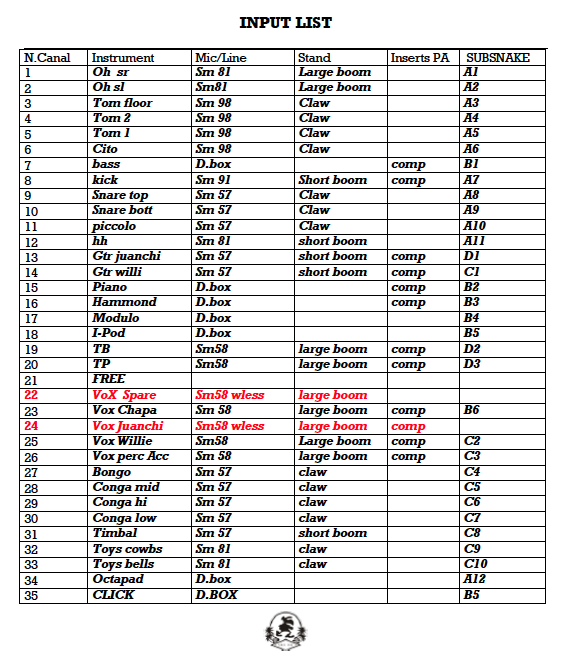
The Stage Plot. As with the input list, having a stage plot will make it easier for all staff to know exactly the position and distribution of all the musicians and instruments on the stage. This allows for an efficient workflow during the set up and adjustments during the show.
Keeping in mind these points will ensure timely and concise information, which will be reflected in the optimization of time, work, and smoothness at the time of setup.
Usually, the person in charge of FOH (Front of House) takes charge of placing the microphones correctly in the instruments (checked beforehand by the person in charge of the monitors).
The monitor engineer, in case of doing the monitoring by themselves and not having personnel in charge to do a radiofrequency coordination, must be very precise, since the musicians’ peace of mind during the show will depend on avoiding technical problems that generate losses of the audio signal. If using floor and/or side fill monitors, the person in charge of monitors should perform an equalization for each area to avoid possible feedbacking. In turn, in the FOH area, an equalization and revision of the entire PA system should also be made (main PA, subwoofers, front fill, out fill, delay, etc.).
At the end of this job that both engineers perform in parallel, they must agree on a line check with the help of stage technicians, during which they will check each one of the inputs and verify that the audio signal arrives without induction, and with a correct polarity according to the input list.
Next, a sound check is performed, in which the musicians play some songs, which usually have dynamics that help the engineers to hear how the sound and the amplification system within the enclosure respond. Another way to perform the sound check is virtually by playing previously recorded multi-tracks from a previous show and/or rehearsals; this is normally used when some or all of the musicians cannot physically be present themselves during the sound test, taking into account that in order to carry it out, they must have the appropriate equipment.
Another important factor when sounding live shows is that we usually do not mix in the same places; this means that although it is the same musical group and the same equipment is available, the show sounds different, either due to the acoustic characteristics of the venue or the atmospheric conditions. Humidity, temperature, the crowd, and the wind are extremely important factors that directly affect the sound, so they must be contemplated before mixing.
For example:
The speed of the wind changes when there is atmospheric variation of humidity, wind, and temperature, so we must take into account the climate, as well as the altitude where we are working. A show that takes place in an outdoor setting will be very different from one when the same group is mixed but in an enclosed venue. This is due to the acoustics of the theater. However, an outdoor location will cause many more climatic changes, although it will possibly avoid standing waves that alter the sound. This is why we must first take into consideration the technical factors when making our mix before taking the art of mixing into account.
If we take into account all the above, we should have reached a safe point, which will allow us to focus more clearly and calmly on the art of mixing, which is to make a clear, precise and balanced mix, while at the same time not disregarding the technical side.
